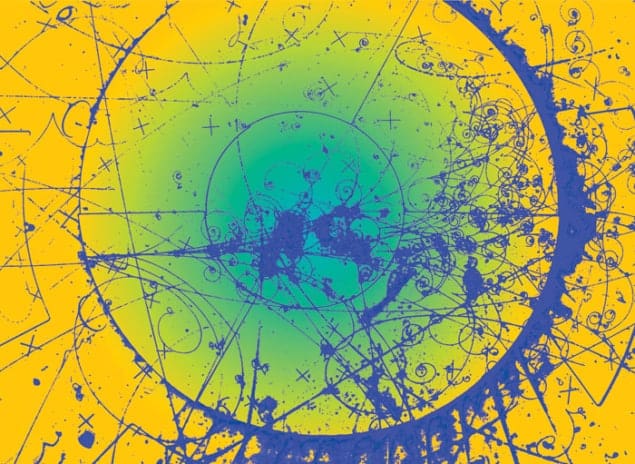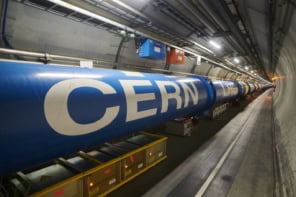Brian Clegg reviews The Neutrino Hunters: the Chase for the Ghost Particle and the Secrets of the Universe by Ray Jayawardhana

The hunt for the Higgs boson may have dominated headlines for the last few years, but Ray Jayawardhana’s book The Neutrino Hunters makes it clear that the neutrino is, if anything, even more worthy of publicity. The neutrino’s importance is not related to the headline-grabbing technical error of 2011, when it appeared that neutrinos had exceeded the speed of light, but rather because these ubiquitous particles – around 100 trillion of which pass through your body from the Sun every second – give astronomers a unique ability to see into otherwise impenetrable parts of the universe. Moreover, their strange ability to change form shakes up the Standard Model, our best current understanding of fundamental particles.
The hunt for neutrinos began in 1930, when the Austrian physicist Wolfgang Pauli predicted the existence of a neutral particle that is emitted during beta decay. In this nuclear process, an electron is given off as a radioactive atom decays, but there is a hole in the system’s total mass/energy after the reaction. Something has gone missing and Pauli predicted that it was an unknown, ghostly particle. Pauli had mixed feelings about this. As he commented to his friend Walter Baade: “I have done a terrible thing. I have postulated a particle that cannot be detected.”
Pauli’s initial speculation was more than a little brave. At the time there were only three known (apparently) fundamental particles: protons, electrons and photons. To propose another just to explain a little missing energy seemed extreme. Pauli called his hypothetical particle the neutron, but the name was soon taken by James Chadwick to apply to the nuclear particle he had discovered, so Pauli’s conjecture was renamed the neutrino (or “little neutral one”) by the Italian physicist Enrico Fermi.
As the title of The Neutrino Hunters suggests, the people who searched for evidence to back up Pauli’s hypothesis, and later for explanations of the new particle’s behaviour, are the book’s main characters. Some of the searchers are well-known figures, but others are fresh and hence particularly interesting. Consider the Italian physicist Bruno Pontecorvo, who was the first to suggest that neutrinos could be detected. He realized that although neutrinos mostly pass straight through matter, very occasionally an atom will absorb a neutrino and be transmuted to a different element. This new element might then decay, allowing the interaction to be detected. A rare event indeed, but Pontecorvo recognized that nuclear reactors and stars pump out so many neutrinos that such events should be detectable.
Soon after making this proposal, Pontecorvo dropped off the radar, only to emerge years later in the Soviet Union, but others went on to build the giant detectors required to observe neutrino-related decays. From the early vats of cleaning fluid to the science-fiction film-maker’s dream that is the IceCube neutrino observatory – a series of 86 elegant chains penetrating over a kilometre deep into ice near the South Pole – these vast detectors, usually deep underground, are as much the stars of the search as are the humans.
Another important but rarely mentioned figure is the US physicist Frederick Reines, who between 1953 and 1956 managed to pin down actual neutrino events, demonstrating that Pauli’s ghostly particle truly existed. And then there was Ettore Majorana, the most enigmatic of the hunters. His idea that a neutrino could be its own antiparticle may explain why our universe is primarily matter rather than antimatter (and also shakes the Standard Model once more), but his science was overshadowed by his sudden unexplained disappearance during a sea crossing in 1938.
Stylistically, Jayawardhana displays an element of “writing by numbers” in the early chapters. It is common in popular science books to start a chapter with a personal cameo from a key character’s life, but in the opening chapter the anecdote has nothing to do with the topic of the book. References to science fiction are another popular science mainstay, but where it’s obvious that an author such as Michio Kaku employs this tactic because he loves the genre, in this case a reference to Isaac Asimov’s rules of robotics is mishandled, since Jayawardhana attributes them to Asimov’s Foundation series rather than the Susan Calvin/US Robots and Mechanical Men stories where they originated.
Soon, however, Jayawardhana settles down to a solid, readable style. The book’s content, meanwhile, is excellent, piling in plenty of interesting detail and interlacing stories of neutrino detection (and their implications for fundamental physics and cosmology) with entertaining facts. For example, we learn that the physicists building the CUORE observatory at Gran Sasso in Italy needed to shield their experiment with lead to keep out stray radioactivity. But freshly mined lead is itself radioactive, so the team made use of nearly 10 tonnes of lead ingots from the wreck of a ship that sank off Sardinia 2000 years ago.
The only criticism I have of the book’s science is that Jayawardhana sometimes oversimplifies. So, for instance, he mentions that the Japanese Super-Kamiokande detector might be improved by dissolving a little gadolinium in its vast tank of water as this “would enhance the detector’s sensitivity to relic neut-rinos”. What is never explained is why the metal would make any difference to the ability to distinguish the “relic” neutrinos – which are left over from supernova explosions – from other types.
Neutrinos have long been under-represented in popular science writing, with the only serious competition coming from Frank Close’s Neutrino. Close is better on the science, but The Neutrino Hunters gives an excellent picture of the hunt itself and of its implications for physics and cosmology, as we find out more about these fascinating, elusive particles.
- 2014 Oneworld/2013 Scientific American £11.99pb/$27.00hb 256pp



